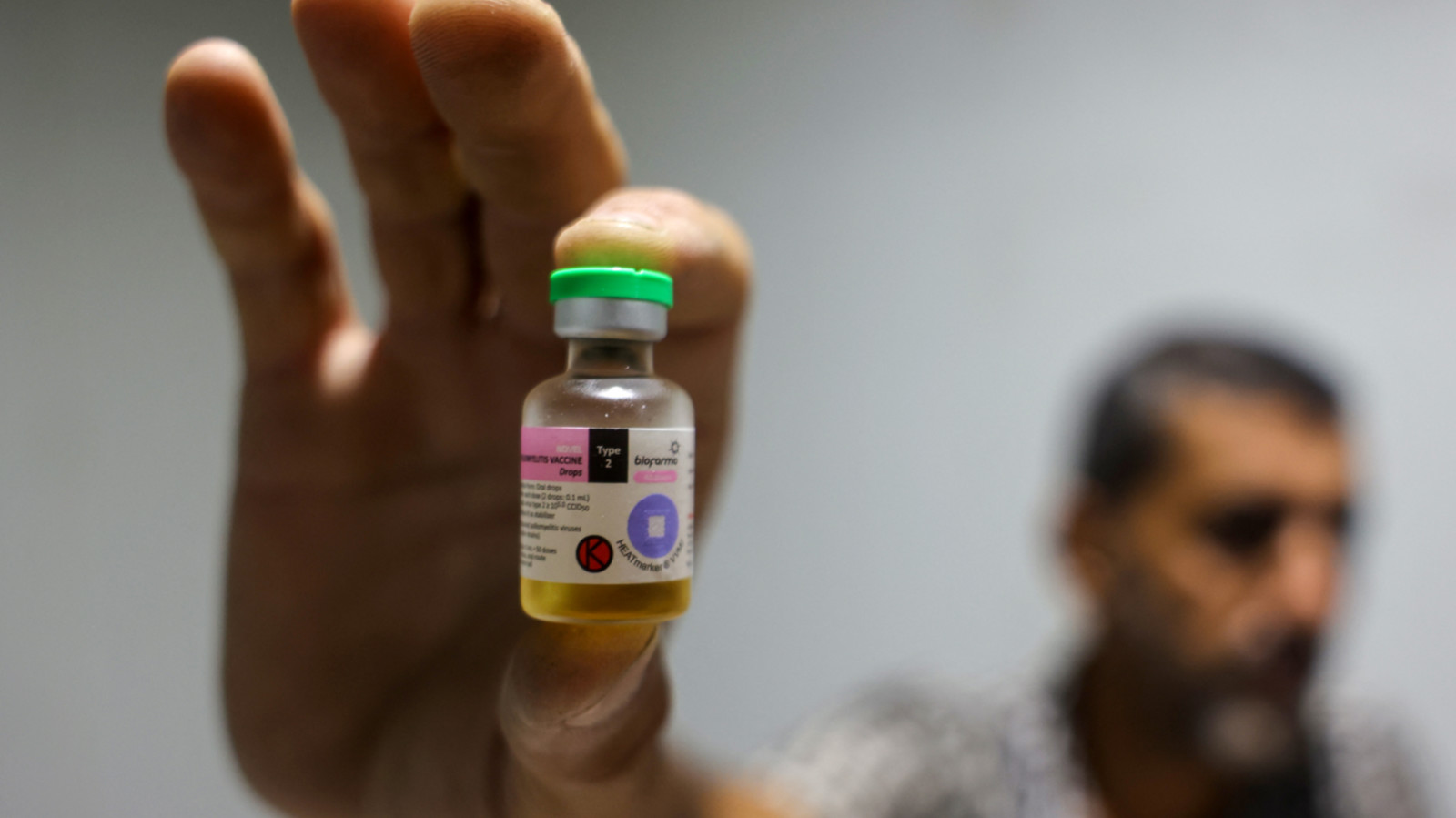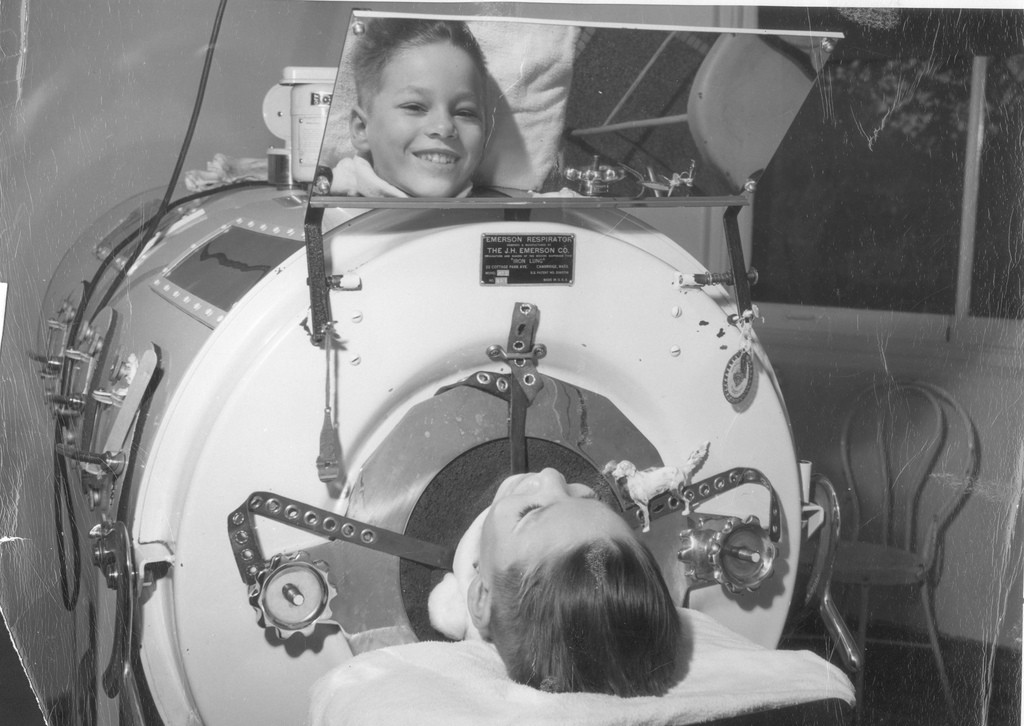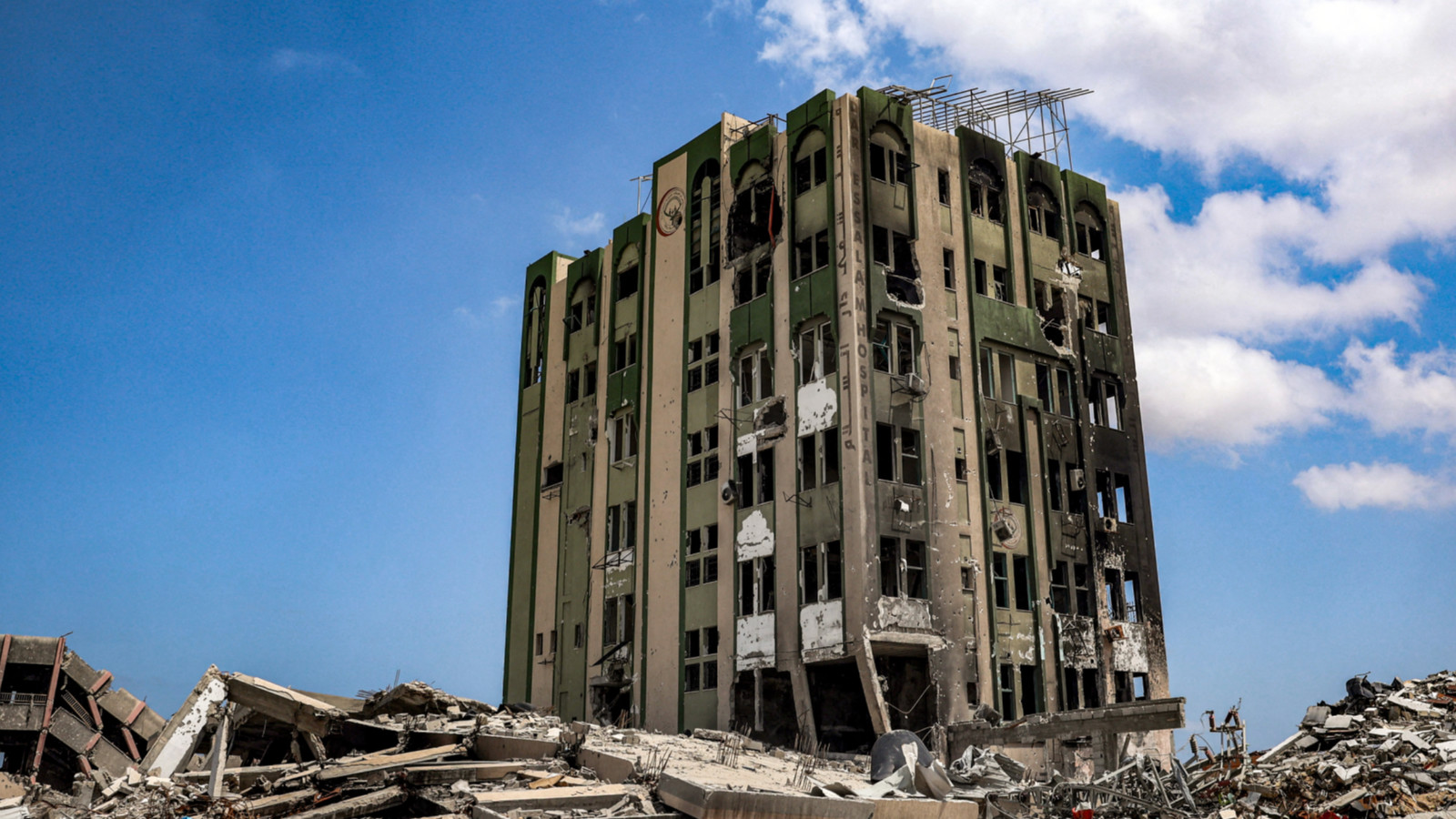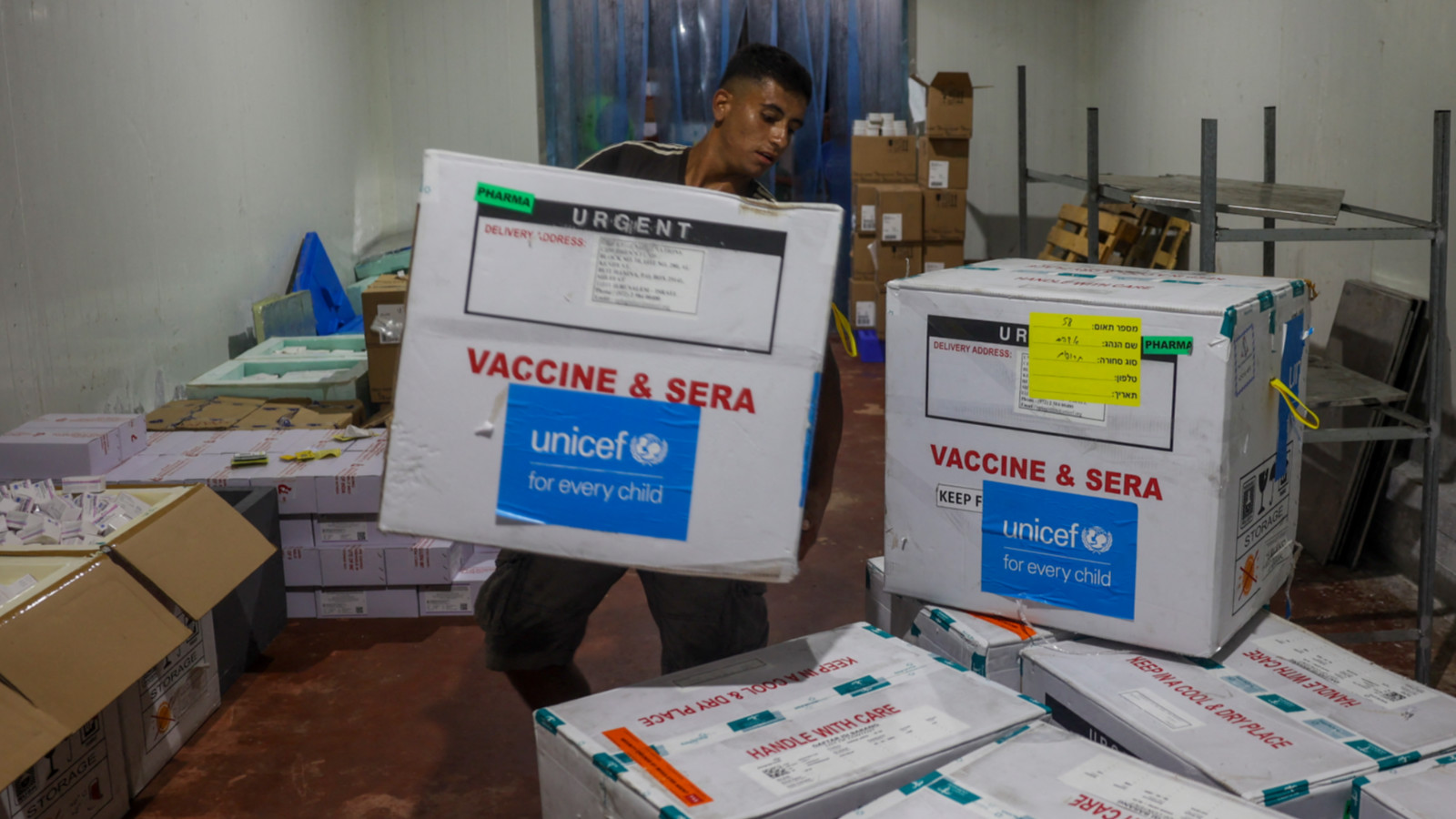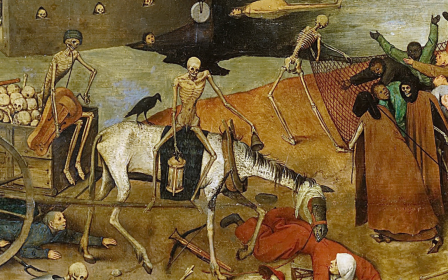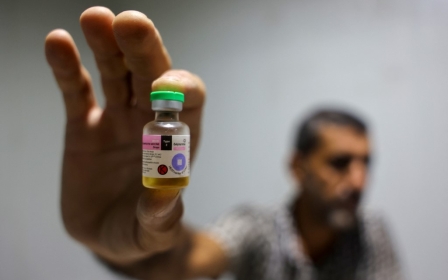Why is there a polio outbreak in Gaza?
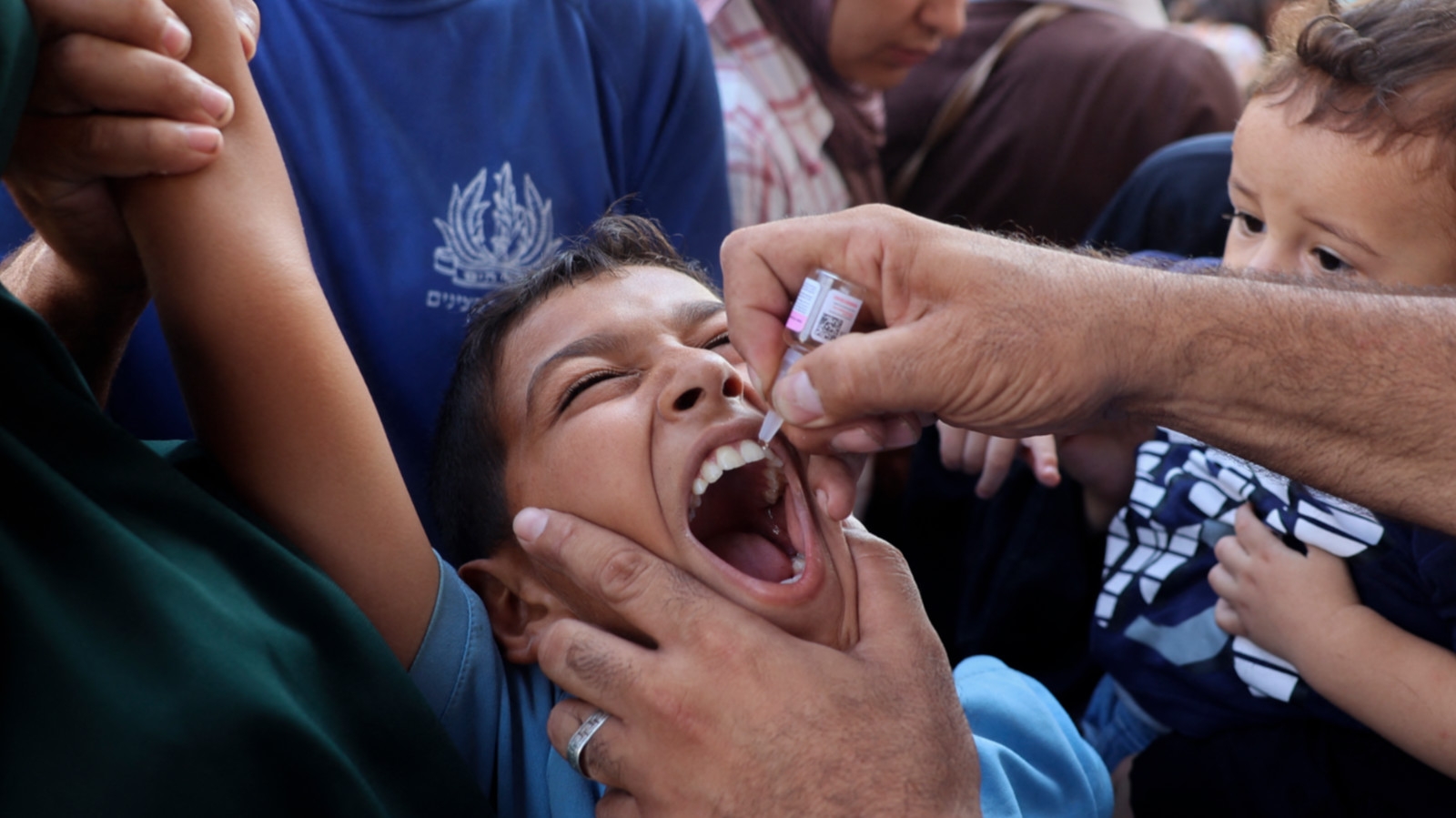
Israel’s war on Gaza has seen the emergence of polio among Palestinians during the past few weeks.
On Sunday, a UN-led campaign began to vaccinate at least 90 percent of the territory’s children and stop the outbreak from spreading. More than 200 teams are now inoculating an estimated 600,000 children in 25 central Gaza locations in the coming days.
To do so, they have had to secure brief and localised halts in fighting between the Israeli army and Hamas while the programme is rolled out.
What is polio?
Polio is a highly contagious virus which enters through the mouth. It is spread through a carrier coughing or sneezing, or else picked up by touching excrement or contaminated food and water.
New MEE newsletter: Jerusalem Dispatch
Sign up to get the latest insights and analysis on Israel-Palestine, alongside Turkey Unpacked and other MEE newsletters
It then targets the nervous system, destroying motor neuron cells, which send signals that control muscle movement, in the spine and brain.
Not everyone carrying the virus will develop polio, but they can still transmit it to someone else.
How severe is polio?
Of those carrying polio, around 1 in 20 people will progress to a mild version known as abortive poliomyelitis. The symptoms are akin to influenza and last 48-72 hours. They include fever, muscle aches, sore throat and vomiting.
An estimated 1 percent of those carrying polio will contract nonparalytic polio, which can last longer and includes pain and stiffness in the neck, arms and legs as well as severe headaches.
In the worst cases, the patient may progress to paralytic polio, including muscle weakness or spasms that lead to limb paralysis, tingling, and problems breathing.
What are the long-term effects?
Paralytic polio can lead to permanent paralysis of some of the limbs, or death if it affects breathing. In addition, post-polio syndrome may emerge 10 – 20 years later among patients who previously suffered the illness. Symptoms can include extreme fatigue and muscle and joint weakness and pain.
What is the cure for polio?
There is no cure for polio, only prevention through vaccination.
How common is polio?
At the start of the 20th century, polio was still prevalent worldwide. In the US, for example, an estimated 21,000 people were paralysed by polio in 1952 alone.
But the introduction of mass vaccination campaigns since the 1950s has seen outbreaks severely curtailed. Europe, for example, was declared polio-free in 2002.
Foremost among these inoculation initiatives has been the Global Polio Eradication Initiative (GPEI), spearheaded by the World Health Organization (WHO) since 1988.
There are still limited cases of outbreaks reported, primarily in sub-Saharan Africa and the Pakistan-Afghanistan region. And surveillance can detect its presence in wastewater, as happened in London in June 2022.
When did polio emerge in Gaza?
There had been no cases of polio in Gaza since the turn of the century. But in June, traces of the virus were found in six sewage samples in Deir al-Balah and Khan Younis.
“These strains have close genetic links with each other and are also closely related to the poliovirus variant that was circulating in Egypt during the second half of 2023,” the GPEI reported. And in August, the WHO reported that a 10-month-old baby had been paralysed by the virus.
Why has polio emerged now in Gaza?
In Gaza, the reasons are manifold. First, Israel’s war on Gaza, which began after the 7 October Hamas-led attack, has interrupted the vaccination program. In 2022, immunization coverage (for the second vaccination dose needed), was at 99 percent.
“However, due to the impact of the conflict, routine immunization coverage (for the second dose of inactivated polio vaccine) dropped from 99 per cent in 2022 to less than 90 per cent in the first quarter of 2024,” reported the WHO, “increasing the risk of vaccine-preventable diseases to children, including polio.”
Secondly, sanitation has deteriorated rapidly during the past year. Oxfam America reported in July 2024 that “Israel has destroyed 70% of all sewage pumps and 100% of all wastewater treatment plants” including an 84 percent drop in water production.
Third has been the destruction of Gaza’s healthcare system and infrastructure: in April, a joint World Bank-UN report stated: “With 84% of health facilities damaged or destroyed, and a lack of electricity and water to operate remaining facilities, the population has minimal access to health care, medicine, or life-saving treatments.”
The program can also not take place without guarantees of safety: since the start of the conflict, more than 500 health workers have been killed in Gaza. Thousands more have been detained by Israeli forces.
Finally, even before the war, Gaza was one of the most crowded places in the world. An estimated 1.9m of its inhabitants – from its pre-war population of 2.2m – have been displaced.
Many, who are malnourished and susceptible to disease, have been pushed into ever smaller spaces; an ideal climate for a contagious virus like polio.
What’s the plan for Gaza?
More than 1.6m doses of the vaccine have been delivered to Gaza, reports the WHO. More than 700 teams will administer the doses.
From this week, the Palestinian Ministry of Health, working with WHO, Unicef and Unrwa will “provide two drops of novel oral polio vaccine type 2 (nOPV2) to more than 640 000 children under ten years of age,” the WHO reported.
It has only been made possible by Israel temporarily pausing its operations for a few hours in some areas, while Hamas has also said it backs the truce.
What are the chances of success?
WHO reports that “At least 95 per cent vaccination coverage during each round of the campaign is needed to prevent the spread of polio and reduce the risk of its re-emergence, given the severely disrupted health, water and sanitation systems in the Gaza Strip.”
But ultimately, the only answer is some form of end to the war and a cessation of fighting.
Middle East Eye delivers independent and unrivalled coverage and analysis of the Middle East, North Africa and beyond. To learn more about republishing this content and the associated fees, please fill out this form. More about MEE can be found here.


